Whether you’re a construction worker navigating a site strewn with heavy materials, or a warehouse worker surrounded by towering stacks of boxes, the right safety toes in your work boots can make all the difference.
Now, let’s talk about the unsung heroes of the job site – the safety toes in your work boots. These little fellas are like the secret service for your toes, always ready to take a bullet, or in this case, a falling object, a rogue nail, or a runaway forklift. They’re the difference between a good day at work and a day spent in the ER explaining how you played footsie with a concrete block.
Renowned safety experts in the industry echo the importance of safety toes. For instance, J.S. Graham, a leading safety trainer in occupational safety (J.S. Graham Safety Consulting), emphasizes, “The right safety toe can make all the difference in preventing workplace injuries. It’s not just about meeting safety standards, but also about ensuring that the bearer returns home safely every day”
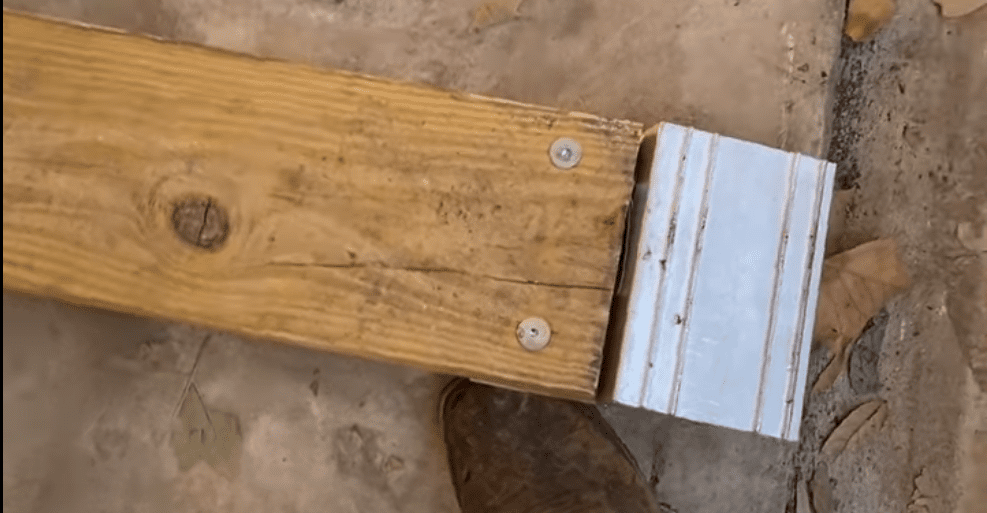
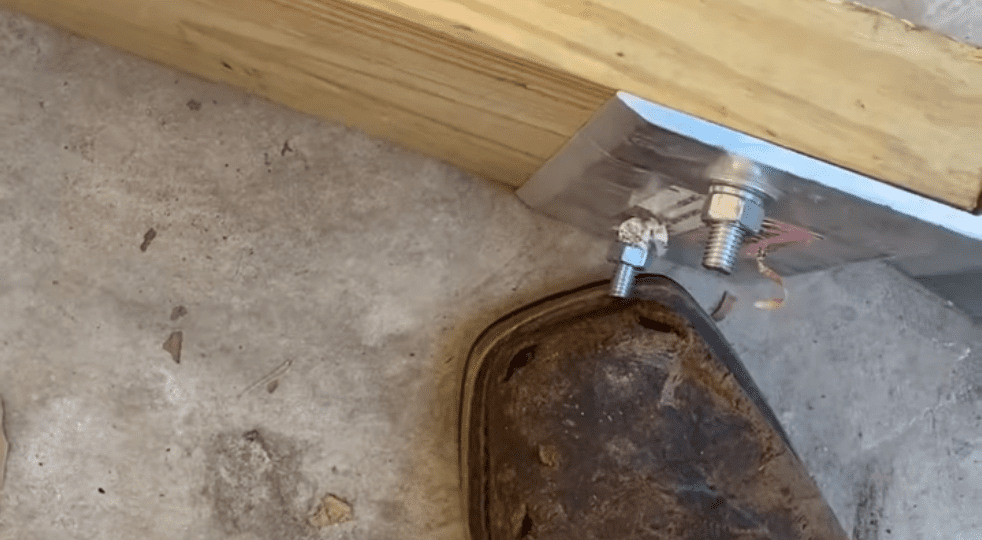

On a more personal note, I recall an incident on construction site (with dear Stephen Robles). A heavy piece of wood, while unloading from a truck, just slipped outta his hand and landed right on the toe (with the nailed-and-bolted parts hitting the toe..goshh!). Immediately a whole was adorned(!!) to the toe of the boot. But thanks to the steel toe inside which prevented his humane toe. That reminds me..but bad days can come. That incident was a stark reminder of the importance of safety toes in work boots.
So, laces up, mate! We’ll explore the nitty-gritty of each type, their pros and cons, and how they keep your toes tapping. Y’all ready? Let’s get to it!
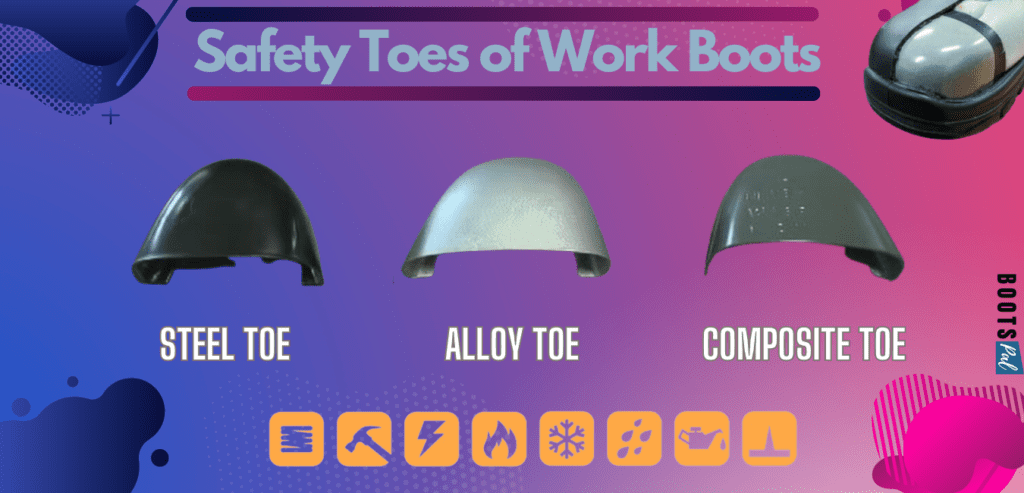
The Basics: What are Safety Toes?
Safety toes are protective reinforcements incorporated in the toe area of work boots, designed to safeguard your feet from falling objects, compression, and punctures. They come in different types based on the material used. But not all safety toes are created equal. Let’s explore the different types of safety toes used in work boots.
Why Should You Use Safety Toes in Work Boots?
Well..why should you not??!
Let’s get it straight. It’s no secret that job sites can be a hazardous playground for your feet. In 2022 alone, foot-related injuries accounted for 10% of all workplace accidents in the US, most of them related to toes.
The good news? Over 75% of these accidents could have been avoided with proper footwear & safety accessories – and that’s where the safety toes of work boots come in.
Types of Safety Toes in Boots
Safety toes, aptly named, are designed to protect your toes from crushing and falling objects. In a nutshell, they are the guardians of your digits, the sentinels of your steps, the wardens of your walk. But it’s not one size fits all, as safety toes come in various types, each with its own pros and cons.
The Classic: Steel Toe Boots
The granddaddy of all safety toes, steel toes are well-known for their unrivaled strength and durability. They can withstand massive impact and compression forces, making them a popular choice for heavy-duty industries such as construction and manufacturing.
Steel toe boots have a long history in the world of work safety. They were first introduced in Germany during World War II to protect soldiers’ feet from shrapnel. After the war, they found a new purpose in industrial settings, where they protected workers from falling objects and heavy machinery.
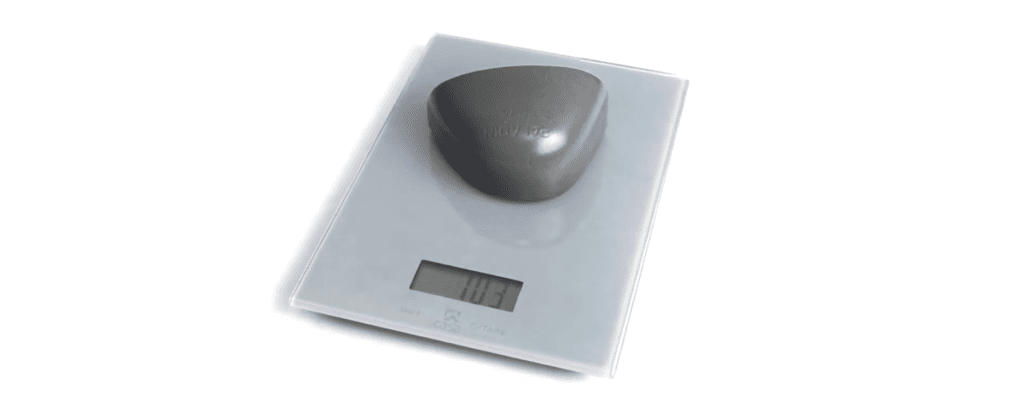
The Design and Benefits of Steel Toe Boots
The defining feature of steel toe boots is their internal toe box made of heavy-duty steel. This toe box is designed to withstand significant impact and compression forces, making steel toe boots an excellent choice for jobs with a high risk of foot injuries.
In addition to their protective qualities, steel-toe boots also offer excellent durability. The steel toe box is resistant to wear and tear, so these boots can last for many years with proper care. This makes them a cost-effective choice for workers who need reliable, long-lasting protection.
The Drawbacks of Steel Toe Boots
Despite their many benefits, steel toe boots do have some drawbacks. Their main disadvantage is their weight. The steel toe box adds significant weight to the boot, which can lead to fatigue over long periods of wear.
Another potential drawback is their thermal conductivity. Steel is a good conductor of heat and cold, so steel toe boots can become uncomfortably hot or cold in extreme temperature conditions.
Industries That Commonly Use Steel Toe Boots
Due to providing unmatched safety for feet/toes, steel toe boots are a popular choice in many industries, including construction, manufacturing, and warehousing. They’re also commonly used in the military and in emergency services like firefighting.
The Lightweight: Alloy Toe Boots
Slightly lighter than steel, but just as strong, aluminum toes offer a balanced compromise between protection and comfort. These toe caps are a common choice for those who need strong protection but desire a little more foot freedom.
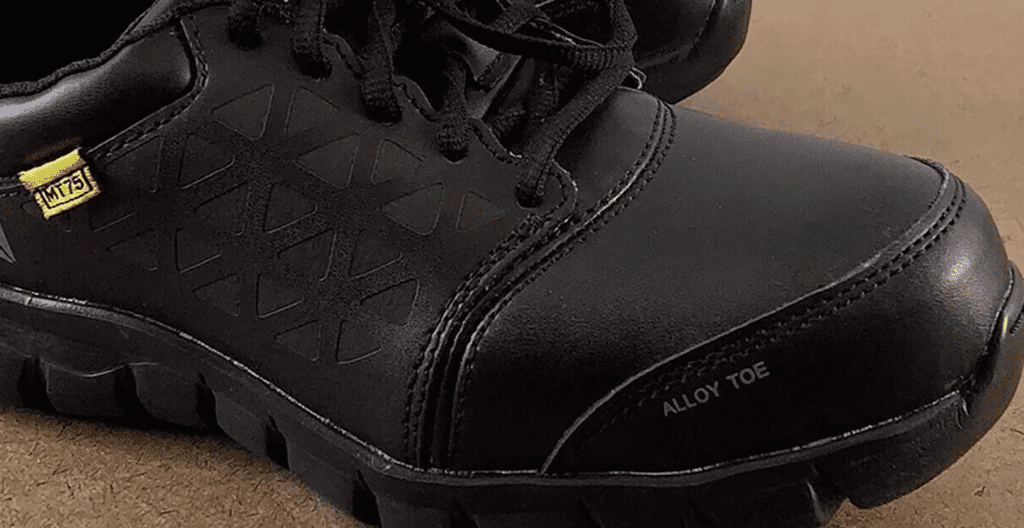
Alloy toe boots are a more recent innovation in work safety footwear. They were developed as a lighter alternative to steel toe boots, using lightweight metals like titanium or aluminum instead of steel.
The Design and Benefits of Alloy Toe Boots
Alloy toe boots offer similar levels of protection as steel toe boots but with significant weight savings. They’re 30-50% lighter than steel toe boots, making them a more comfortable choice for workers who are on their feet all day.
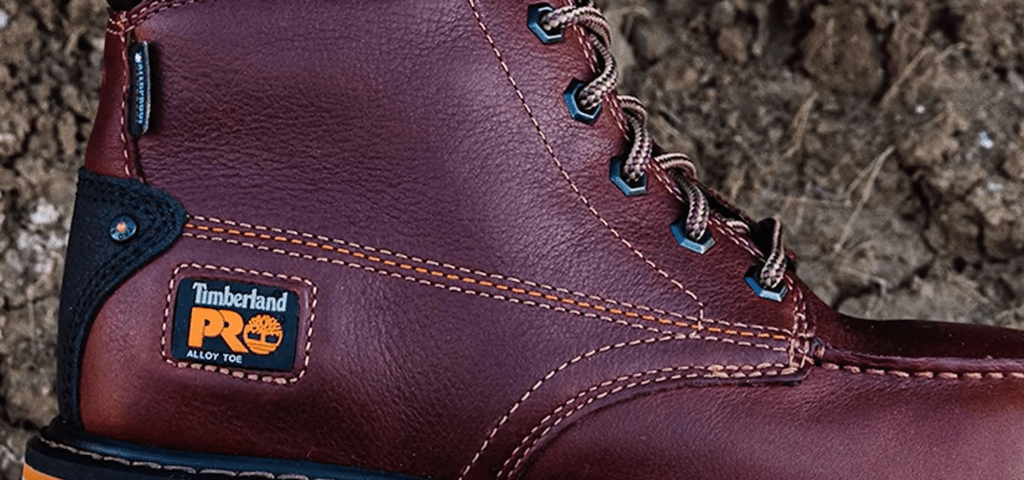
In addition to their lightweight, alloy toe boots also offer excellent durability. The alloy materials used in their construction are resistant to wear and tear, so these boots can provide reliable protection for many years.
The Drawbacks of Alloy Toe Boots
While alloy toe boots have many benefits, they also have some potential drawbacks. The main disadvantage is their cost. The lightweight metals used in their construction are more expensive than steel, which makes alloy toe boots a more expensive option.
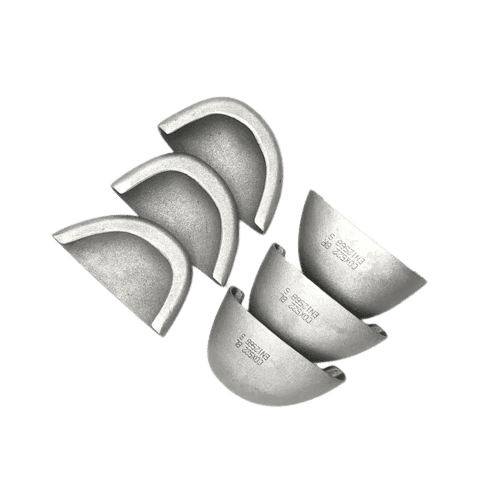
Another potential drawback is their size. Because alloy materials are less dense than steel, alloy toe boxes need to be larger to provide the same
level of protection. This can make alloy toe boots bulkier and less sleek than their steel toe counterparts.
Industries That Commonly Use Alloy Toe Boots
Alloy toe boots are a popular choice in industries where weight is a concern. This includes jobs that involve a lot of walking or climbing, such as construction, landscaping, and delivery services. They’re also a good choice for workers who need to pass through metal detectors, as alloy toe boots are less likely to set them off.
The Non-Metallic: Composite Toe Boots
In contrast to their metal counterparts, composite toes are made from non-metallic materials like Kevlar, carbon fiber, or plastic. They offer substantial protection but shine in environments where metal-free footwear is required.
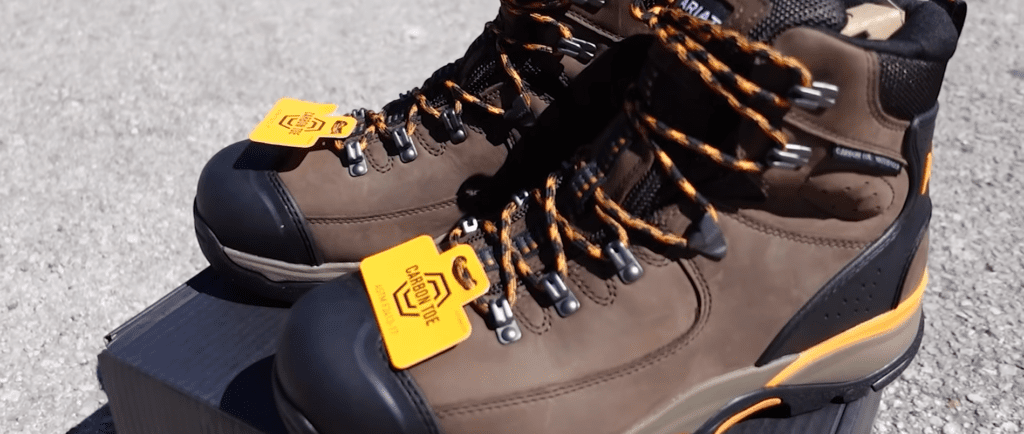
Composite toe boots are a relatively new addition to the world of work safety footwear. They were developed to provide a non-metallic alternative to steel and alloy toe boots, using materials like Kevlar, carbon fiber, plastic, or fiberglass instead of metal.

The Design and Benefits of Composite Toe Boots
Composite toe boots offer several unique benefits. First, they’re lighter than steel toe boots, making them a comfortable choice for long periods of wear. They also don’t conduct heat or cold, so they’re a good choice for work in extreme temperature conditions.
Another advantage of composite toe boots is that they don’t set off metal detectors. This makes them a popular choice in industries where workers need to pass through security checkpoints, such as airports and courthouses.
The Drawbacks of Composite Toe Boots
While composite toe boots have many benefits, they also have some potential drawbacks. The main disadvantage is their durability. While composite materials are resistant to impact and compression forces, they’re not as resistant to wear and tear as metal. This means that composite toe boots may not last as long as steel or alloy toe boots.
Another potential drawback is their size. Because composite materials are less dense than metal, composite toe boxes need to be larger to provide the same level of protection. This can make composite toe boots bulkier and less sleek than their metal counterparts.
Industries That Commonly Use Composite Toe Boots
Composite toe boots are a popular choice in industries where metal is not allowed or desirable. This includes jobs that involve working with electricity, as composite materials don’t conduct electricity. They’re also commonly used in the military and in emergency services, where the ability to pass through metal detectors without setting them off is a significant advantage.
The Future is Here: Nano Composite Toes
Nano composite toes are a cutting-edge innovation in work safety footwear. They’re made from tiny particles of fibrous materials that are bound together to create a cap that is strong, light, and thin.
The Design and Benefits of Nano Composite Toes
Nano composite toes offer several unique benefits. First, they’re lighter and thinner than other types of safety toes, making them a comfortable choice for long periods of wear. They also offer excellent protection, with the same level of impact and compression resistance as steel and composite toes.
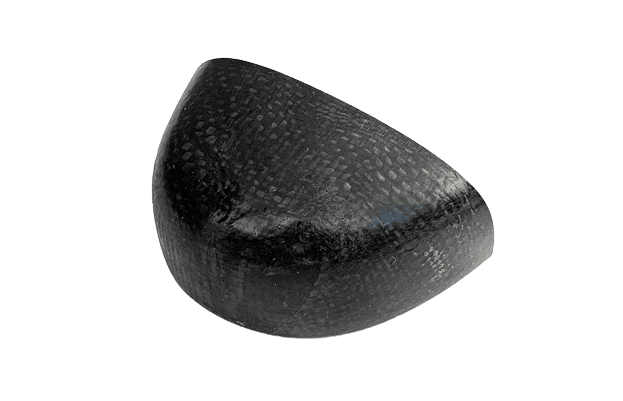
The Drawbacks of Nano Composite Toes
While nano composite toes have many benefits, they also have some potential drawbacks. The main disadvantage is their cost. The materials and technology used to make nano composite toes are more expensive than those used for other types of safety toes, which makes nano composite toe boots a more expensive option.
Industries That Commonly Use Nano Composite Toes
Nano composite toes are a popular choice in industries where weight and bulk are a concern. This includes jobs that involve a lot of walking or climbing, such as construction, landscaping, and delivery services. They’re also a good choice for workers who need to pass through metal detectors, as nano composite toes are less likely to set them off.
So here we may end the discussion on the types of safety toe boots. But though the soft toe boots have the type of toes that may not be considered as safety for certain types of industries, still they can be used in a few less-safety-demanding industries. Let's see what soft toes are.
Soft Toe Boots
Not all work boots have safety toes. Soft toe boots, while not offering the same level of protection as their safety-toe counterparts, can still be a good choice for jobs that don’t require a safety toe but still demand a durable, comfortable boot.
The Design and Benefits of Soft Toe Boots
Soft toe boots are designed for comfort and durability. They’re made from high-quality materials that can withstand the rigors of the job site, and they often feature cushioned insoles and supportive midsoles for all-day comfort.
The Drawbacks of Soft Toe Boots
The main disadvantage of soft toe boots is that they don’t offer the same level of protection as safety toe boots. They’re not designed to withstand impact or compression forces, so they’re not a good choice for jobs with a high risk of foot injuries.
Industries That Commonly Use Soft Toe Boots
Soft toe boots are a popular choice in industries where comfort and durability are more important than foot protection. This includes jobs that don’t involve heavy machinery or falling objects, such as office work, retail, and hospitality.
Here's a consolidated features comparison table of the safety toes used in work boots:
| Safety Toe | Material | Weight | Thermal Conductivity | Metal Detector Friendly | Price | Suitable Industries |
|---|---|---|---|---|---|---|
| Steel Toe | Steel | Heavy | High | No | $ | Construction, Manufacturing, Warehousing |
| Alloy Toe | Titanium or Aluminum | Lighter than Steel | Medium | Sometimes | $$ | Construction, Landscaping, and Delivery Services |
| Composite Toe | Kevlar, Carbon Fiber, Plastic, or Fiberglass | Lighter than Steel | Low | Yes | $$ | Electricity-related jobs, Military, Emergency Services |
| Nano Composite Toe | Fibrous Materials | Lightest | Low | Yes | $$$ | Construction, Landscaping, and Delivery Services |
| Soft Toe | Various (No Protective Material) | Varies | N/A | N/A | $ | Office Work, Retail, Hospitality |
What Do the Market Trends and Statistics Say About Safety Toes?
As of 2022, the global safety footwear market was worth around $5.5 billion, showing a promising growth trend. This growth has been propelled by increasing safety regulations and awareness of worker safety. The U.S. alone has millions of workers who need safety footwear, and trends show an increase in demand for these products.
It’s also important to note that the market for safety toe work boots is influenced by a variety of factors, including changes in safety regulations, advancements in technology, and shifts in the industries that require safety footwear. For example, growth in industries like construction and manufacturing can lead to increased demand for safety toe work boots.
However, In recent years, there has been a trend towards lighter, more comfortable safety footwear, which has increased the popularity of boots with composite and alloy safety toes. At the same time, traditional steel toe boots continue to be widely used due to their high level of protection and durability.
We’ve conducted a survey with around 300 friends and peers who work in the relevant industries and use safety toed work boots (obviously many of them didn’t participate, LoL.. but still the participation was enough though to have a clear idea). As expected, we got steel toes as the winner. Also, the nano toed ones are gradually gaining popularity, as we observed. The result is below (in percentage):
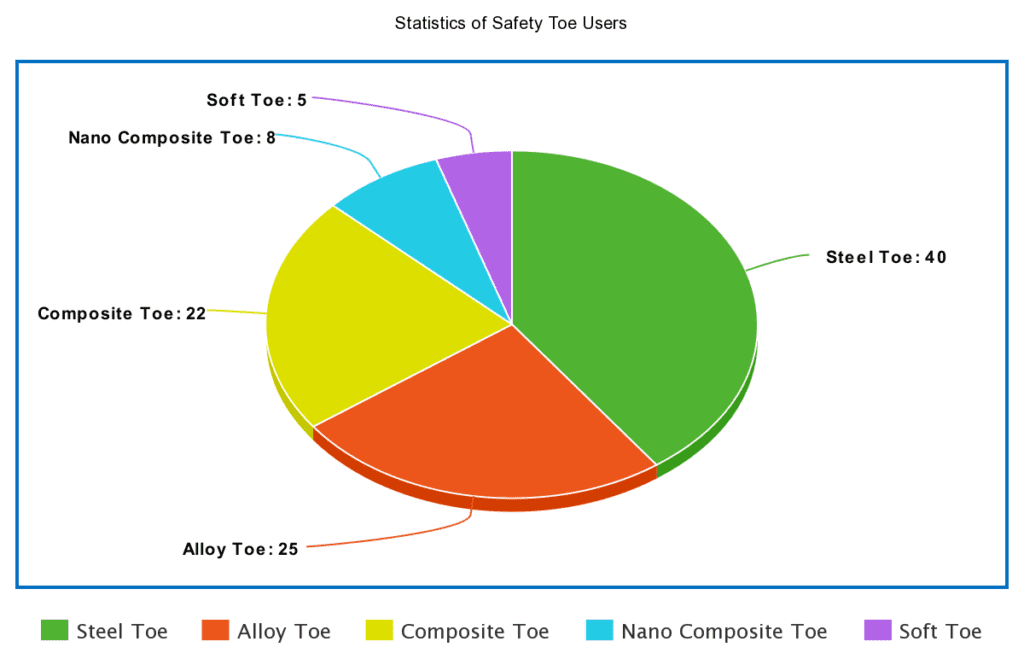
Design Aspects of Safety Toes
From a design perspective, safety toes must strike a balance between protection, comfort, and style. Recent years have seen a rise in ‘sneaker-style’ safety footwear, where traditional work boot designs are combined with the look and comfort of sneakers. The integration of safety toes into these designs without sacrificing aesthetics presents an exciting challenge for designers.
Choosing the Right Safety Toe for Your Needs
Making a choice might seem like a game of “eeny, meeny, miny, moe,” but it’s more of a horses-for-courses situation. You see, the best safety toe for you depends on your work environment, personal comfort, and specific needs.
In other words, don’t just go for what’s popular, trendy, or even what your co-worker, Bob, swears by. Choose what’s right for your work, your comfort, and ultimately, your toes.
When selecting work boots with safety toes, here are some key considerations to keep in mind:
1. Assessing Job Requirements and Hazards
One of the first steps in choosing the right safety toe is assessing the requirements and hazards present in your job environment. Consider the following aspects:
- Nature of the work: Determine the type of work you are engaged in and the specific hazards associated with it. Assess whether you are exposed to heavy falling objects, machinery impacts, sharp tools, or electrical hazards.
- Industry standards and regulations: Research the safety standards and regulations that apply to your industry. Certain occupations or workplaces have specific requirements for safety footwear, including the type of safety toe. Ensure you comply with these regulations to maintain a safe working environment.
- Risk assessment: Conduct a risk assessment to identify the potential hazards and risks in your work environment. This evaluation will help you understand the level of toe protection required and guide your decision in choosing the appropriate safety toe type.
2. Comfort and Fit Considerations
Comfort is crucial when it comes to work boots, as you will likely be wearing them for extended periods. Consider the following factors related to comfort and fit:
- Proper sizing: Ensure that you select work boots that fit properly. Ill-fitting boots or less toe-room can cause discomfort, blisters, or foot problems. Refer to the manufacturer’s sizing guidelines and try on different sizes to find the most suitable fit for your feet.
- Arch and ankle support: Look for boots that provide adequate arch and ankle support. Proper support helps prevent foot fatigue and reduces the risk of injuries, particularly if your work involves long hours of standing or walking.
- Cushioning and shock absorption: Consider the level of cushioning and shock absorption provided by the boots. Quality work boots often incorporate features such as cushioned insoles or midsoles that help absorb impact and reduce strain on your feet and joints.
- Design aspects: From a design perspective, safety toes must strike a balance between protection, comfort, and style. Recent years have seen a rise in ‘sneaker-style’ safety footwear, where traditional work boot designs are combined with the look and comfort of sneakers.
3. Additional Safety Features
In addition to the safety toe, work boots often come with additional safety features that can enhance protection and performance. Consider the following features based on your specific job requirements:
- Slip resistance: If you work in an environment where slippery surfaces are common, work boots with slip-resistant outsoles will provide better traction and reduce the risk of slips and falls.
- Waterproofing: If you work outdoors or in wet conditions, waterproof work boots will keep your feet dry and comfortable.
- Electrical hazard protection: For individuals working in industries with electrical hazards, such as electricians or construction workers, electrical hazard (EH) rated work boots will provide additional insulation and protection against electrical shocks.
- Puncture resistance: Some work environments, such as construction sites or manufacturing facilities, have risks of sharp objects or punctures. Consider work boots with puncture-resistant soles or midsoles to minimize the risk of injuries from sharp objects penetrating the sole of the boot.
These additional safety features can provide an extra layer of protection tailored to your specific work environment, ensuring comprehensive safety measures are in place.
Caring for Your Safety Toe Work Boots
Choosing the right safety toe work boots is a significant first step (pun intended). However, keeping them in tip-top condition is just as crucial. Regular maintenance not only extends their lifespan but also ensures they perform their protective role effectively.
Here are some maintenance tips to kick-start your safety toe care routine:
- Clean your boots after each use to remove dirt and grime.
- Condition them regularly to prevent the material from drying out and cracking.
- Dry your boots properly if they get wet. Avoid direct heat, as it can damage the boot material.
- Regularly inspect your boots for any signs of damage or wear. If you find any, it’s time to replace them.
So, Are There Any Alternatives for Safety Toes in Work Boots?
If you ask me, I’ll obviously say NO! Because there’s nothing more important than protecting your toes at job sites from potential danger.
But sometimes situations and some other factors may drive you to look for alternatives.
If your job doesn’t involve heavy machinery or falling objects but still requires some level of foot protection, there are alternatives to safety toes. Here are a few options that still provide protection for your toes:
- Soft Toe Boots with Extra Padding: Soft toe boots don’t have a protective cap in the toe box, but some models come with extra padding for added comfort and minor protection. They won’t protect against heavy falling objects, but they can provide some resistance against minor bumps and knocks.
- Metatarsal Guards: Metatarsal guards are a great alternative if the risk at your job involves objects falling on the top of your foot rather than just your toes. These guards extend from the toe box to the top of the boot, protecting the upper part of your foot as well as your toes.
- External Toe Guards: These are attachments that can be added to the outside of your work boots to provide additional protection for your toes. They’re typically made of hard materials like steel or hard plastic and can be a good alternative if you don’t like the feel of safety toes inside your boots.
- Toe Bumpers: Some work boots come with rubber or leather toe bumpers that provide an extra layer of material over the toe area. While not as protective as safety toes, they can help resist wear and tear and provide some protection against minor impacts.
- Kevlar-Lined Boots: Kevlar is a strong and lightweight material that’s often used in bulletproof vests. Some work boots have a Kevlar lining that can provide a level of puncture resistance and minor impact protection for your toes.
- Tactical Boots: These are military-style boots that often come with reinforced toes for added protection. They’re not as protective as safety toe boots, but they can provide some resistance against minor impacts and are typically more comfortable and lightweight.
Remember, these alternatives won't provide the same level of protection as safety toe boots. Always choose footwear that offers the right protection for your specific job hazards.
Ensuring Compliance and Safety
To ensure the quality and effectiveness of safety toes, several safety standards and certifications have been established by organizations such as ASTM International, Occupational Safety and Health Administration (OSHA), International Organization for Standardization (ISO), and Canadian Standards Association (CSA). These standards outline specific requirements and testing procedures to ensure the reliability and performance of safety toes in work boots.
See below my Timberland Endurance Boots’ box for safety marking:
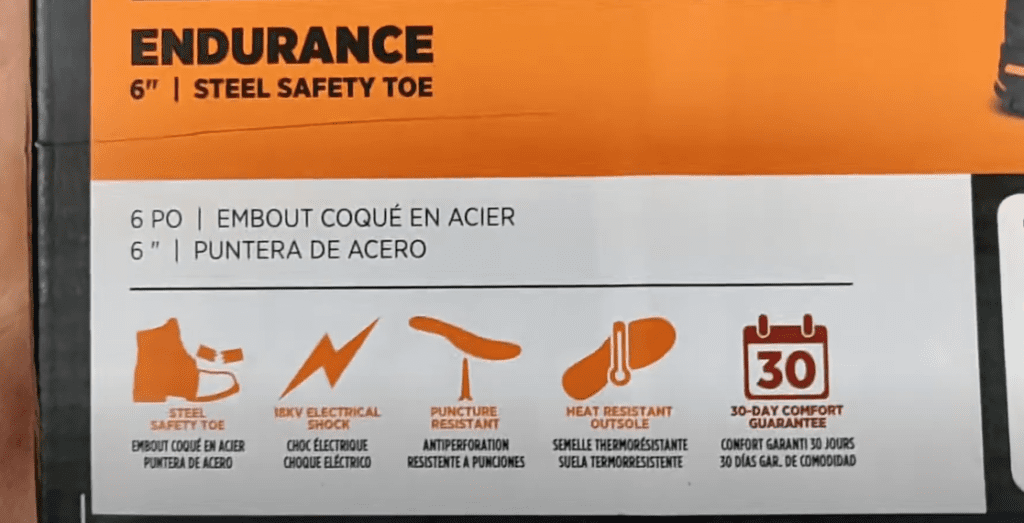
To ensure compliance and maximize safety when selecting work boots with safety toes, it is crucial to consider the relevant safety standards and certifications. Here are some guidelines to ensure compliance and safety:
- Understand the applicable safety standards: Familiarize yourself with the safety standards and certifications relevant to your industry and region. This includes standards such as ASTM F2413, OSHA, ISO, EN, and CSA, among others.
- Verify compliance: Check for labels, markings, or tags on the work boots that indicate compliance with the required safety standards. Look for specific codes or symbols associated with features such as impact resistance, compression resistance, electrical hazard resistance, and more.
- Refer to industry regulations: Research and understand the safety regulations specific to your industry and workplace. Ensure that the safety toes in the work boots meet or exceed the minimum requirements outlined by these regulations.
- Consult with safety professionals: Seek guidance from safety professionals or experts in your industry to ensure that the work boots you select with safety toes align with the necessary safety standards and regulations.
- Consider third-party certifications: Look for work boots with safety toes that have been certified by reputable third-party organizations. These certifications can provide an additional level of assurance regarding the quality and performance of the safety toes.
With these guidelines and ensuring compliance with relevant safety standards and certifications, you can make informed decisions and select work boots with safety toes that offer reliable protection for your specific work environment. Prioritizing compliance and safety safeguards both your well-being and that of your colleagues in hazardous work environments.
The Future of Safety Toes
We’ve already seen steep growth in popularity for the very new “Nano Composite Toes”. So we can obviously say that the future of safety toes is looking bright, with increased emphasis on workers’ safety and continual innovations in design and materials.
We can expect to see boots with safety toes that are lighter, stronger, and more comfortable, expanding their appeal beyond traditional industries and into any situation where foot protection is desired.
Frequently Asked Questions
What is the difference between a safety toe and a steel toe?
All steel toes are safety toes, but not all safety toes are steel. Steel toe is a type of safety toe made from steel, while safety toe is a general term that includes all types of protective toe caps, including steel, alloy, composite, and nano composite.
Are composite toe boots as safe as steel toe boots?
Yes, composite toe boots meet the same safety standards as steel toe boots. They can provide the same level of protection against impact and compression injuries.
Can safety toe work boots cause foot problems?
If properly fitted, safety toe work boots should not cause foot problems. However, wearing poorly fitted boots can lead to discomfort and foot issues. It’s recommended to try on new work boots towards the end of the day (when your feet are likely to be swollen) to ensure a comfortable fit.
Are safety toe work boots mandatory for all job sites?
Not all job sites require safety toe work boots. It depends on the nature of the job and the hazards present. However, for job sites with a risk of foot injuries due to falling or rolling objects, safety toe work boots are often a requirement under Occupational Safety and Health Administration (OSHA) regulations. Always check with your employer or safety supervisor for specific requirements.
How often should I replace my safety toe work boots?
The lifespan of safety toe work boots varies depending on their usage, material, and maintenance. As a general rule, you should replace your work boots when you notice signs of wear and tear, such as cracks, loose soles, or when the safety toe is exposed.
Enjoy an interesting safety toes testing video below..I guess you'll get the idea..
Courtesy: Ally Safety
Before I Say Goodbye
Choosing the right safety toe for your work boot is a crucial decision that can impact your comfort, safety, and productivity on the job. Whether you opt for the classic steel toe, the lightweight alloy toe, the non-metallic composite toe, the cutting-edge nano composite toe, or the comfortable soft toe, the most important thing is that your choice meets your specific needs and the demands of your workplace. Remember, a safe worker is a happy worker!
Keeping your toes safe at a job site isn’t a footsie game—it’s a necessity. With the right safety toe work boots, you can ensure your toes aren’t just comfortable, but also protected from the daily hazards of your job site. Whether it’s steel, aluminum, or composite toes, the important thing is to choose the one that suits your work, your comfort, and your safety needs. After all, happy toes make for a happy worker, right?
- Are Steel Toe Boots Safe? Debunking Myths and Unveiling Facts - July 23, 2023
- Ensuring a Firm & Safe Footing: An In-depth Guide to Safety Toes in Work Boots (Types, Features, & More) - July 17, 2023
- Silence the Symphony of Squeaky Steps: How to Stop Leather Boots from Squeaking (And Shoes Too) - July 3, 2023